2.6.
Firing Order of Cylinders
Cylinder firing order improves the distribution of the fresh charge in the manifold to the
cylinders and helps the release of the exhaust gases, while at the same time suppresses torsional
vibrations. These conditions are as follows.
(i) Successive cylinders firing allows a recovery of charge in the manifold and minimizes
interference between adjacent or nearby cylinders. Normally cylinders from opposite
end of the manifold are chosen or from alternate cylinder banks in *V engines to draw
alternately. This arrangement, however, becomes difficult as the number of cylinders
decreases.
(ii) Separating successive cylinders, which are exhausting, are even more important than
for induction. It is because if the exhaust periods overlap with the cylinders, exhaust-
gas back pressure may prevent escaping of products of combustion from the cylinders.
(Hi) Power impulses cause winding up of the crankshaft. In addition, if the natural
torsional oscillations of the shaft coincide with these disturbing impulse frequencies,
torsional vibrations may take place. Therefore, in general, it is desirable to have
successive power impulses to alternate ends of the crankshaft.

Fig. 2.15. Single-cylinder arrangement.
2.6.1.
Single-cylinder Arrangements
A single-cylinder engine has a power stroke every
720 degrees/1 i.e. 720 degrees of crankshaft rotation
for a four-stroke-cycle engine. The engine has simply
a single-throw crank-arm, and the rotating big-end
journal or crankpin is linked to the piston gudgeon
pin by means of a connecting-rod to have both a linear
and an oscillating motion (Fig. 2.15).
When piston is at TDC, it is either completing
compression and about to begin power stroke or it is
at the end of the exhaust stroke and beginning induction stroke. Assuming piston initially at
TDC at zero angle of crankshaft rotation, it is then at BDC at 180 degrees and 540 degrees, and
at TDC at 360 degrees and 720 degrees of crankshaft rotation.
2.6.2.
Twin-cylinder Arrangement
A. In-line Side-by-side
An in-line side-by-side twin-cylinder engine has a power
impulses every 720 degrees/2 i.e. 360 degrees of crankshaft
rotation. The crankshaft uses a single-throw crank-arm with
both pistons and connecting-rods attached to a common big-end
journal or crankpin (Fig. 2.16).
When piston 1 is at TDC, it is on the top of its compression
stroke and about to start its power stroke. Piston 2 is then at
its exhaust stroke at TDC and about to begin its induction
stroke. With 180 degrees of crankshaft rotation, both pistons
are at BDC and piston 1 is about to start its exhaust stroke and piston 2 its compression stroke.
A second 180 degrees of crankshaft rotation brings pistons 1 and 2 to TDC to begin their
induction and power strokes respectively. A third 180 degrees rotation of the crankshaft moves
the pistons to BDC, and piston 1 and 2 are about to start compression and exhaust strokes
respectively. A four-stroke cycle of720 degrees is completed when fourth rotation of 180 degrees
brings the pistons to the original starting position.
B. In-line 180 Degrees-out-of-phase
With this arrangement power impulses take place at un-
even intervals, i.e., at every 180 degrees and 540 degrees of
crankshaft displacement. The cylinders are positioned parallel
to each other, when piston 1 is at TDC, piston 2 is at BDC and
the crank-throws are 180 degrees out of phase with each other
(Fig. 2.17). If initially piston 1 is at the end of compression and
the beginning of its power stroke, then piston 2 is at the end of
power and at the beginning of its exhaust stroke.
First rotation of crankshaft through 180 degrees brings
piston 1 to BDC, about to begin its exhaust stroke after complet-
ing power stroke, while piston 2 is at TDC, at the end of exhaust
stroke and about start compression stroke. A second rotation of’
180 degrees moves pistons 1 and 2 to TDC and BDC respective-

Fig. 2.16. In-line side-by-side twin-
cylinder arrangement.

Fig. 2.17. In-line 180 degree^omt-
ofphase twin-cylinder arrangement.

Fig. 2.18. Horizontally opposed twin-cylinder
arrangement.
ly. The piston 1 is at the end of exhaust and at
the beginning of induction stroke, while 2 is
beginning its compression after completing its
induction stroke.
The third 180 degrees rotation of the
crankshaft brings piston 1 to BDC, ending induc-
tion and starting its compression stroke, while
piston 2 is at TDC and ready for next power
stroke after completing compression stroke. Fourth 180 degrees rotation of crankshaft moves
piston 1 to TDC and piston 2 to BDC bringing them to initial starting positon.
C. Horizontally Opposed
This arrangement provides power impulses at even intervals of every 360 degrees of
crankshaft rotation. The crank-throws are 180 degrees out of phase with each other. The
connecting-rods and pistons are positioned on opposite sides of the crankshaft, horizontally
opposed (Fig. 2.18) with the cylinder axes offset to each other. Therefore, pistons approach TDC
and BDC positions together although, they move in opposite directions at all times. Assuming
pistons are at TDC, piston 1 at the end of compression and the beginning of power stroke, and
then piston 2 finishes exhaust and about to start its induction stroke..
First, second and third 180 degrees rotation of crankshaft bring the pistons to BDC, TDC
and BDC positions respectively performing their respective strokes as indicated in the figure.
Fourth 180 degrees rotation completes the cycle of events of four-stroke cycle and brings the
pistons to their initial starting positions. These engines are used in small motorcars.
D. 90 Degrees *V
In this arrangement, two cylinders are positioned at 90 degrees to each other with both big
ends attached to a single crankpin (Fig. 2.19). With this configuration power impulses have
uneven intervals, which take place every 270 degrees and 450 degrees of crankshaft movement.
Cylinder banks are designed to form V either at left-hand or right-hand when looking from the
front of the engine. Side-by-side connecting roads are used, and two banks of cylinders are offset
relative to each other.
Assuming piston 1 first at the end of compres-
sion stroke in readiness for firing and piston 2 is
then at mid-stroke approaching TDC on either its
exhaust or its compression stroke. Let piston 2 is
at mid-stroke on its exhaust stroke. Rotation of
the crank through 450 degrees completes its ex-
haust, induction, and compression strokes in
readiness for firing. At this point piston 1 is at
mid-stroke on induction stroke, so rotation of the
crank through a further 270 degrees completes
both its » i action and compression strokes. The
total cranK-angle interval for these two firing
events adds up to 450 + 270 i.e. 720 degrees.
The V-twin cylinder engines can have only a moderate degree of dynamic balance, and their
uneven filling intervals and insufficient cyclic-torque smoothness make them unsuitable for the
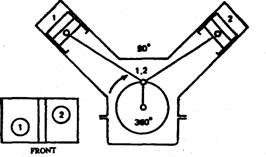
Fig. 2.19. V-twin cylinder arrangement.
car. This case has been discussed in order to explain the basic arrangement of V-bank cylinders
with connecting-rods sharing a common crankpin. This is important engine layout.
2.SJ3.
In-line Three-cylinder Arrangement
A three-cylinder engine has a power impulse every 720 degrees/3 i.e. 240 degrees of
crankshaft rotation for the four-stroke cycle operation. The crank-throws and crankpins are
spaced at intervals of 120 degrees and four main journals and bearings are provided (Fig. 2.20)
to support the crankshaft.
With piston 1 at the top of the compression stroke and start of its power stroke, pistons 2
and 3 are at 60 degrees crank-angle from BDC on their induction and exhaust strokes
respectively. A120 degrees rotation of crankshaft places piston 3 at TDC at the end of its exhaust
stroke and beginning of its induction stroke, and pistons 1 and 2 at 60 degrees from BDC on
their power and compression strokes respectively.
A second 120 degrees rotation of crankshaft moves piston 2 to TDC, completing compression
stroke in readiness for its power stroke. Pistons 1 and 3 are at 60 degrees from BDC on their
respective exhaust and induction strokes. Third 120 degrees movement brings piston 1 to TDC
so that it just ends exhaust stroke and about to begin its induction stroke. Pistons 2 and 3 now
are at 60 degrees from BDC on their respective
power and compression strokes. Finally a fourth
120 degrees of crankshaft rotation places piston
3 at TDC on its compression stroke and ready to
start power stroke. This sequence of events
results in a firing order of 1, 2, 3.
These engines are dynamically balanced.
The extra cylinder smoothes out the cyclic torque
sufficiently so that the engine stands as a com-
petitor to the popular four-cylinder configura-
tion. This configuration provides savings in
weight and length, and has reduced reciprocating
and rotational drag, which improves fuel con-
sumption.
2.6.4.
Four-cylinder Arrangement
A. In-line
A four-cylinder in-line engine has a power im-
pulse every 720 degrees/4 i.e. 180 degrees of
crankshaft movement. The crankshafts have crank-
throws situated at intervals of 180 degrees to each
other in the order in which the power impulses are
intended. With this crankshaft arrangement (Fig.
2.21), all four crank-throws lie in one plane,
crankpins 1 and 4 being in phase but at 180 degrees
to crankpins 2 and 3.
Assuming crankpin 1 is at the top of a compres-
sion stroke, crankpin 4 must be at the top of an
exhaust stroke and crankshaft rotation makes then
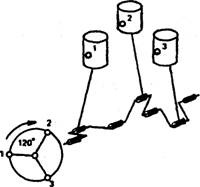
Fig. 2.20. In-line three-cylinder arrangement.
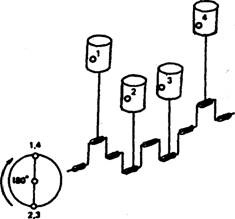
Fig. 2.21. In-line four-cylinder arrangement.
to descend on a power stroke and on an induction stroke respectively. Rotation of the crankshaft
through 180 degrees places big-ends 1 and 4 at the bottom of their strokes, while big-ends 2 and
Satthetopoftheir storkes after either a compression or an exhaust stroke. Further it is assumed
that piston 3 be the next to descend on power stroke, while piston 2 descends on an induction
stroke. The order of firing is then 1,3.
A second 180 degrees movement of crankshaft positions crankpins and pistons 1 and 4 at
the top of their exhaust and power strokes respectively, so that at this point the order of firing
is 1, 3, 4. A third crankshaft rotation of 180 degrees again places pistons 2 and 3 at the top of
their stroke. As piston 3 previously descended on a power stroke, piston 2 is now on its power
stroke, so that the complete firing order is 1, 3, 4, 2. A final 180 degrees rotation completes 720
degrees displacement of crankshaft in a four-stroke engine.
If cylinder 2 is selected instead of cylinder 3 to fire after cylinder 1, then firing order would
be 1,2,4,3. Both these firing orders have equal merits and limitations with respect to crankshaft
torsional wind-up and the uneven breathing intervals between adjacent cylinders. In-line
four-cylinder engines in the capacitors from 0.75 to 2.0 liters are most popular.
B. Horizontally Opposed Flat
This arrangement requires a single-plane crankshaft with crankpins spaced at 180 degrees
intervals. Therefore the crank-throws are paired so that crankpins 1 ad 4 are diametrically
opposite to crankpins 2 and 3 (Fig. 2.22). Let pistons 1 and 2 are at TDC, and pistons 3 and 4
at BDC for the consideration of firing order. Let piston 1 is at the end of its compression stroke
and just to start power stroke, then piston 2 is completing exhaust, while pistons 3 and 4 are at
power and induction strokes respectively.
Rotation of the crankshaft through 180 degrees places pistons 3 and 4 at TDC at the end of
their respective exhaust and compression strokes and
piston 4 is about to start power stroke. Pistons 1 and
2 are at BDC completing their respective power and
induction strokes. The order of firing is 1, 4. A second
180 degrees of rotation brings piston 1 and 2 to TDC,
at the end of their respective exhaust and compres-
sion strokes, while piston 3 and 4 are at BDC com-
pleting their respective induction and power strokes.
The order of firing is 1, 4, 2.
A third 180 degrees rotation brings piston 3 and
4 to TDC at the end of their respective compression
and exhaust strokes, while piston 1 and 2 are at BDC
completing their respective induction and power
stroke. The complete order of firing is 1,4,2,3. A final
180 degrees rotation completes 720 degrees of
crankshaft displacement.
The flat four-cylinder engine has slightly better dynamic balance than the in-line four-
cylinder engine, but the smoothness of torque is equal in both the cases. The flat shape makes
it suitable for rear mounted engines but opposed cylinder allow very little room for cylinder head
servicing.
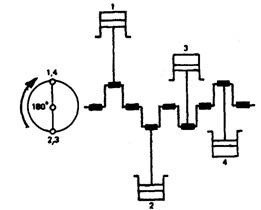
Fig. 2.22. Horizontally opposed flat four-
cylinder arrangement.
C.60 Degrees ‘V
In this arrangement the cylinders fire at equally spaced intervals of 180 degrees and are
placed with numbers 1 and 2 in the left-hand bank and numbers 3 and 4 in the right-hand bank.
The crankpins are unequally spaced at alternate intervals of 60 degrees and 120 degrees (Fig.
2.23), and they lie in two planes when viewed from the front. Main journals and bearings are
provided at each end, with a third journal between crankpins 2 and 3. With such an arrangement
pairs of pistons are at the top of their strokes but in different cylinder banks.
When pistons 1 and 4 are at TDC, either of these may be chosen to be at the end of its
compression stroke and about to fire. The other piston
would then be at the end of exhaust and just beginning its
induction stroke. Let pistons 1 and 4 are at the end of its
compression and exhaust strokes respectively. Rotation of
crankshaft through 180 degrees places pistons 2 and 3 at
the top of their respective exhaust and compression
strokes, causing the order of firing as 1, 3 at this point.
A second 180 degrees rotation brings pistons 1 and 4
to TDC position again, with piston 1 completed its exhaust
stroke and about to start its induction stroke, while piston
4 is at the end of compression and about to begin power
stroke. The order of firing up to this point is 1,3,4. A third
180 degrees rotation positions pistons 2 and 3 at TDC,
with piston 2 at the end of compression and about to begin
its power stroke. The complete order of firing now is 1, 3,
4, 2. Finally a fourth 180 degrees rotation completes 720
degrees of crankshaft movement.
This is an extremely compact engine, but dynamic
balance of this layout is poor, requiring an additional
counterbalance shaft.
2.6.5.
In-line Five-cylinder Arrangement
This arrangement has a power impulse every 720 degrees/5 i.e. 144 degrees of crankshaft
rotation. There are five crank-throws, all in separate planes spaced at an interval of 72 degrees
relative to each other. The crankshaft may have a main journal and bearing at each end and
between each pair of crankpins, making six-main-journal crankshaft. Alternatively, the main
journals between crankpins 1 and 2, and 4 and 5 may be removed with slightly reduced support
to provide a shorter four-main journal crankshaft. Firing-order is considered with the
crankshaft arrangement shown in Fig. 2.24.
With piston 1 at TDC at the end of compression stroke and about to begin its power stroke,
pistons 4 and 5 are at 72 degrees from TDC on their induction and exhaust strokes respectively.
and pistons 2 and 3 are at 36 degrees from BDC on their respective compression and power
strokes. Crankshaft rotation through 144 degrees brings piston 2 to the top compression stroke
and beginning of power, while pistons 3 and 5 are at 72 degrees from TDC on their respective
exhaust and induction strokes, and pistons 1 and 4 are at 36 degrees from BDC on their
respective power and compression strokes.
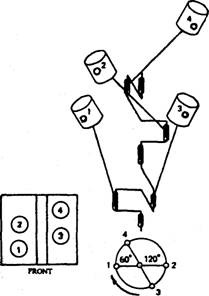
Fig. 2.23. “V four-cylinder arrangement.
At the end of second 144-degrees movement
of the crankshaft, piston 4 is at the top, complet-
ing compression and about to begin its power
stroke. Pistons 1 and 3 are at 72 degrees from
TDC on their respective exhaust and induction
strokes, and pistons 2 and 5 are at 36 degrees
from BDC on their respective power and compres-
sion strokes. At the end of third rotation of the
crank through 144 degrees, piston 5 reaches TDC,
to the end of compression and the beginning of its
power stroke. Pistons 1 and 2 are at 72 degrees
from TDC on their respective induction and ex-
haust strokes, and piston 3 and 4 are at 36
degrees from BDC on their respective compres-
sion and power strokes. A fourth 144-degree rota-
tion moves piston 3 to TDC on compression stroke
and about to start power stroke. Pistons 2 and 4 are then on their induction and exhaust strokes
respectively, and pistons 1 and 5 are on their compression and power strokes respectively. This
arrangement provides a firing order of 1,2,4, 5, 3. A final 144 degrees of rotation completes 720
degrees of crankshaft displacement
The spacing of the crank-throws through an odd number of five cylinders ensures, unlike
four-cylinder arrangement, that the pistons do not all stop and start together at the top and
bottom of each stroke. Therefore, this arrangement provides a very smooth drive.
2.6.6.
Six-cylinder Arrangement
A. In-line
A six cylinder in-line engine has a power
impulse every 720 degrees/6 i.e. 120 degrees of
crankshaft rotation. The crankshaft has six
crank-throws placed at 120 degrees out of
phase with one another, which can be arranged
only in three planes. Therefore, the crankpin
phasing is arranged in pairs (Fig. 2.25). For
heavy-duty diesel engines, seven journals and
bearings are provided, at each end and be-
tween adjacent crankpins. For petrol engines
only 4 or 5 main journals are provided. The
firing order with the crankshaft arrangement
shown in Fig. 2.25 is considered.
With piston 1 at the top of the compression
stroke, its opposite piston 6 is at the top of its
exhaust stroke. Rotation of crankshaft through 120 degrees brings pistons 2 and 5 to their TDC
and either one of these can be arrangement to complete a compression stroke. If piston 5 is
arranged to be at the end of compression and at the start of its power stroke, then piston 2 must
be on its exhaust stroke. Rotation of crankshaft through second 120 degrees positions pistons 3
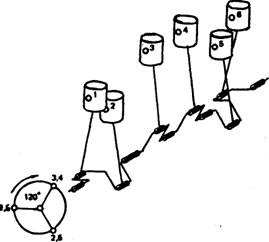
Fig. 2.25. In-line six-cylinder arrangement.
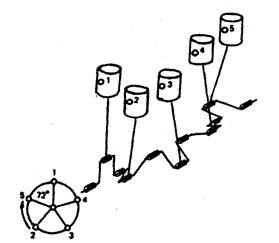
fig. 2.24. In-line five-cylinder arrangement.
and 4 at the TDC, so either one of these can be on the compression stroke. If piston 3 is made
to be on compression, piston 4 must be on its exhaust stroke.
A third rotation of 120 degrees brings pistons 1 and 6 back again to TDC, where piston 6 is
arranged to be on the compression and piston 1, therefore, be on its exhaust stroke. A fourth
120 degrees rotation brings pistons 2 and 5 to their TDC. Piston 2 is now on its compression
and piston 5 on its exhaust stroke. Rotation of crankshaft through fifth 120 degrees brings piston
3 and 4 to TDC. Piston 4 is on compression and piston 3 on its exhaust stroke. Final rotation of
120 degrees completes the 720 degrees displacement of crankshaft and brings the pistons into
positions for the next cycle. This cycle provides a firing order of 1, 5, 3, 6, 2, 4.
If the phasing of paired crank-throws 3 and 4 and 2 and 5 are interchanged, then a second
equally suitable firing-order of 1, 4, 2, 6, 3, 5 is achieved. This arrangement provides excellent
dynamic balance and evenness of torque, and is preferred for engines larger than 2.5 liters
provided length is not a prime consideration.
B. Horizontally Opposed Flat
This six-cylinder engine has its three cylinders positioned in a horizontal plane on each side
of the crankshaft. The power impulses are timed as for the in-line six-cylinder arrangement
with every 120 degrees of crankshaft movement. The crankshaft has six crankpins spaced at 60
degrees intervals around the crankshaft. Normally five main journals and bearings are used .
Pairs of pistons, one from the each side of the bank reaches TDC and BDC simultaneously (Fig.
2.26). Similar to the in-line six-cylinder engine, this arrangement is extremely well balanced,
but its flat wide configuration makes it difficult to install at the front or rear of the car.
Assume pistons 1 and 2 at TDC with piston 1 at the end of compression and about to start
power stroke and piston 2 at the end of its exhaust stroke.
Pistons 3, 4, 5, and 6 are then at 60 degrees from BDC on
their exhaust, compression, induction, and power strokes
respectively. When the crankshaft is rotated by 120
degrees, pistons 3 and 4 reach at TDC at the end of their
respective exhaust and compression strokes. Pistons 1, 2,
5 and 6 are then at 60 degrees from BDC on their respec-
tive power, induction, compression, and exhaust strokes.
The order of firing at this point is 1, 4.
A second 120 degrees movement places pistons 5 and
6 at TDC, completing compression and exhaust strokes
respectively. Pistons 1, 2, 3, and 4 are then at 60 degrees
from BDC on exhaust, compression, induction and power
strokes respectively. The order of firing becomes 1,4,5. A
third 120 degrees rotation positions pistons 1 and 2 at
TDC again, completing exhaust and compression strokes
respectively. Pistons 3, 4, 5, and 6 are then at 6 degrees
from BDC on compression, exhaust, power, and induction
strokes respectively. The order of firing at this point is 1,
4, 5, 2,
A fourth 120 degrees rotation places piston 3 and 4 at TDC again, completing compression
and exhaust strokes respectively. Pistons 1,2,5, and 6 are then at 60 degrees from BDC on their
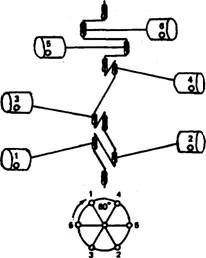
Fig. 2.26. Horizontally opposed flat
six-cylinder arrangement.
induction, power, exhaust and compression strokes respectively. The order of firing becomes 1,
4, 5, 2, 3. A fifth 120 degrees rotation brings pistons 5 and 6 to TDC again, completing exhaust
and compression strokes respectively. Pistons 1, 2, 3, and 4 are then at 60 degrees from BDC
on compression, exhaust, power, and induction strokes respectively. The complete firing order
is 1,4,5,2,3,6. A final rotation of 120 degrees completes 720 degrees of crankshaft displacement
making ready for next cycle to begin.
C. 60 Degrees *V Six-cylinder
In this layout the cylinders fire at equally spaced intervals of 120 degrees. The cylinders are
located with numbers 1,2, and 3 in the left-hand bank and numbers 4, 5, and 6 in the right-hand
bank. The crankshaft uses six crankpins to support the shaft, equally spaced at intervals of 60
degrees and arranged to lie in three planes. There are four main journals and bearings placed
at each end and between pairs of crankpins to support the shaft, thus providing a relatively
short but rigid construction (Fig. 2.27). The dynamic balance is relatively good providing a short
compact engine compared with the in-line six-cylinder arrangement.
Four firing orders are possible, but three of these involve consecutive firing of three cylinders
in each bank and only the fourth enables cylinders to be fired alternatively from each bank
having a firing order as 1, 4, 2, 5, 3, 6. This arrangement also offers the best selection from the
torsional vibration consideration. With this arrangement, pairs of pistons in different cylinder
banks are at the top of their strokes.
Consider pistons 1 and 5 are at TDC after compression and exhaust strokes respectively so
that piston 1 is about to start its power stroke and piston 5 in its induction stroke. A120 degrees
rotation of the crankshaft brings pistons 3 and 4 to the top of exhaust and compression strokes
respectively. At this point, the order of firing is 1, 4. A second rotation of 120 degrees positions
pistons 2 and 6 at TDC on compression and exhaust
strokes respectively. The order of firing at this point
is 1, 4, 2.
A third 120 degrees rotation places pistons 1 and
5 at TDC on exhaust and compression strokes respec-
tively so that at this point the order of firing is 1,4,
2, 5. A fourth 120 degrees rotation of crankshaft
positions pistons 3 and 4 to TDC on compression and
exhaust strokes respectively. The order of firing be-
comes 1, 4, 2, 5, 3. A fifth 120 degrees of rotation
brings pistons 2 and 6 at the top of exhaust and
compression strokes respectively. The final order of
firing is therefore 1,4,2,5,3, 6. The next 120 degrees
rotation completes 720 degrees of crankshaft dis-
placement so that ready for the next cycle of events.
2.6.7.
Eight-cylinder Arrangement
A. In-line Straight
This arrangement has a power impulse every 720
degrees/8 i.e. 90 degrees of crankshaft movement.
The crank-throws are spaced at intervals of 90
degrees to each other in the order the power impul-
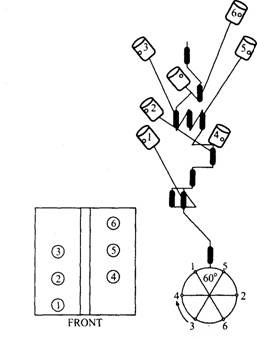
Fig. 2.27. Vsix-cylinder arrangement.
ses intended (Fig. 2.28). There can only be four relative angular positions. Therefore, the
crankpin phasing is arranged in pairs and hence the crank-throws lie in two planes. Five or
nine main journals are required to support the crankshaft. The layout presented in the figure
resembles a four-cylinder crankshaft in one plane with twin cranks at either end forming a
second plane at right angles to the first. This arrangement is sometimes known as a split four
inline eight.
Let pistons 1 and 8 are at TDC, with piston 1 at the end of compression about to fire and
piston 8 at the end of its exhaust stroke. Pistons 3 and 6 are at mid-stroke on their respective
exhaust and compression strokes ; pistons 2 and 7 at BDC at the end of induction and power
strokes respectively; and pistons 4 and 5 at mid-stroke on their respective power and induction
strokes.
Rotation of the crankshaft through 90 degrees positions pistons 3 and 6 at TDC at the end
of exhaust and compression strokes respectively. Pistons 2 and 7 are then at mid-stroke on their
respective compression and exhaust strokes ; pistons 4 and 5 at BDC at the end of power and
induction strokes respectively; and pistons 1 and 8 at mid-stroke on their respective power and
induction strokes. The firing order at this positon is 1, 6.
A second 90 degrees rotation of crankshaft provides the firing order at this positon as 1,6,
2. Third degrees rotation position gives the firing order as 1, 6, 2, 5; fourth 90 degrees rotation
position as 1, 6, 2, 5, 8 ; fifth 90 degrees rotation position as 1, 6, 2, 5, 8, 3 and sixth 90 degrees
movement positon as 1, 6, 2, 5, 8, 3, 7. The seventh 90 degrees movement completes the firing
orders after 630 degrees rotation as 1, 6, 2, 5, 8, 3^ 7, 4.
A further 90 degrees movement makes
a total of 720 degrees, and completes two
crankshaft revolutions or four strokes in
readiness for the next cycle to begin. By
arranging different pairs of crank-throws,
other firing orders have been used in the
engines are 1, 5, 2, 6, 4, 8, 3, 7 and 1, 7, 3, 8,
4, 6, 2, 5.
To have extra capacity to pull large
loads, the crankshaft may be extended with
two more cylinders. This design though is
dynamically balanced there can be torsional
vibrations problem and also the extended
length may be difficult to accommodate in
some trucks.
B. 90 Degrees *V Eight with Single-plane Crankshaft
Similar to the two-plane crankshaft of the in-line eight-cylinder, the single-plane layout
used for the V-eight provides a power impulse every 90 degrees of crankshaft rotation. The
single-plane crankshaft uses four crankpins paired to have both outer and both inner crankpins
in phase. Each crankpin carries two connecting rod big ends, and normally five main journals
are used to support the crankshaft (Fig. 2.29).
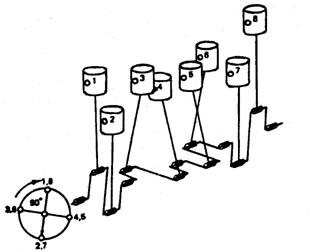
Fig. 2.28. In-line straight eight-cylinder arrangement.

Fig. 2.29. 90 degrees V eight-cylinder
arrangment with single-plane crankshaft.
Let pistons 1 and 4 remain at TDC, with piston 1
at the end of compression and about to fire, and piston
4 at the end of its exhaust stroke. Pistons 2 and 3 are
then at BDC at the end of power and induction strokes
respectively ; pistons 5 and 8 are at mid-stroke on
exhaust and compression strokes respectively ; and
pistons 6 and 7 are at mid-stroke on induction and
power strokes respectively.
A first, second, third, fourth, fifth, and sixth 90
degrees rotation of crankshaft provide the firing order
in their respective positions as, 1, 8; 1, 8, 3; 1, 8, 3, 6 ;
1, 8, 3, 6, 4 ; 1, 8, 3, 6, 4, 5 ; and 1, 8, 3, 6, 4, 5, 2. The
final firing order is completed after 360 degrees of
rotation i.e. seventh 90 degrees movement of the
crankshaft and is 1, 8, 3, 6, 4, 5, 2, 7.
An eighth 90 degrees of rotation completes 720
degrees of crankshaft movement of four-stroke cycle
and in readiness for the next cycle of events.
The single-plane crankshaft, unlike the two plane
V-eight crankshaft, provides at least 180 degrees ex-
haust pulse intervals between adjacent cylinders, and
with single manifold modification this can be extended
to 360 degrees before pulse interference can occur.
C. 90 degrees *V Eight-cylinder Arrangement
with Two-plane Crankshaft
This arrangement of cylinders provides the firing at
equally phased intervals of 90 degrees. The cylinders are
arranged with numbers 1, 2, 3, and 4 in the left-hand
band and numbers 5, 6, 7, and 8 in the right-hand band
as shown in Fig. 2.30. The two-plane crankshaft uses
pairs of crank-throws phased at intervals of 90 degrees.
Each crankpin incorporates two separate connecting-
rods, hinged to pistons in different cylinder banks. A
main journal and bearing is provided at each end and
between adjacent crankpin. Since two connecting-rods
share a common crankpin these five-main-journal-
crankshafts are extremely short and less complicated.
The two-plane crankshaft has a dynamic balance far
superior to that of the single-plane crankshaft and hence
is more popular.
Consider the order of cylinder power strokes occur-
ring as the crankshaft rotates as shown in the Fig. 2.30.
With piston 1 at TDC after its compression stroke and at
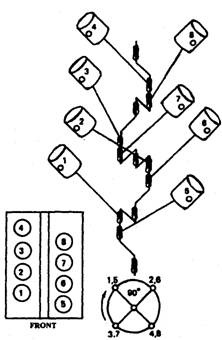
Fig. 2.30. 90 degrees V eight-cylinder
arrangement with two-plane crankshaft.
the beginning of the power, piston 5 is at mid-stroke on compression. Piston 3 and 7 are then at
mid-stroke exhaust and at the beginning of exhaust respectively; pistons 4 and 8 are at the
beginning of the compression and at mid-stroke on induction respectively; and pistons 2 and 6
are at mid-stroke power and at the beginning of induction respectively.
With subsequent first, second, third, fourth, fifth, sixth and seventh 90 degrees of rotations
of the crankshaft provide the firing order in this case as 1, 5, 4, 8, 6, 3, 7, 2. A final eighth 90
degrees of rotation completes 720 degrees of crankshaft displacement.
2.6.8.
Twelve Cylinder Arrangement
These engines are originally designed for aeroplanes. But some cars like Rolls Royce,
Packard, Lincoln Zephyer and Daimler “Double” Six have also employed these engines. These
provide a much superior torque and perfect dynamic balance, but have extra complication and
expense of manufacture.
Essentially the twelve-cylinder arrangement consists of two sets of six-cylinder in-line with
each forming a bank inclined at 60 degrees or 75 degrees. They use a common crankshaft
and camshaft with six sets of forked and plain connection rods. The engine employs a pair of
magnetic coil ignition units, two circulating pumps, and two carburettors for best results. These
engines have a firing order of 1, 4, 9, 8, 5, 2, 11, 10, 3, 6, 7, 12. The Italian Ferrari is the only
car, which is being manufactured with a twelve-cylinder engine.
2.6.9. Sixteen Cylinder Arrangement
These engines have two sets of straight eight-cylinders inclined at an angle or “V and are
perfectly balanced. This engine operates smoothly due to a continuous flow of power through
eight power impulses equally spaced for every revolution of the crankshaft. The firing order of
the cylinder arrangement is 1, 4, 9, 12, 3, 16, 11, 8, 15, 14, 7, 6, 13, 2, 5, 10. The Cadillac car
uses this engine and has the specifications of bore and stroke 88.9 mm each, cylinder capacity
7060 cc and produces 136 kW at 3600 rpm. The cylinders, arranged in two banks of eight
cylinders each, are inclined at 135 degrees. A single casting includes both cylinder banks and a
greater part of the crankcase. Hydraulic compensating types of valve tappets are used for
automatically maintaining the correct clearance.
